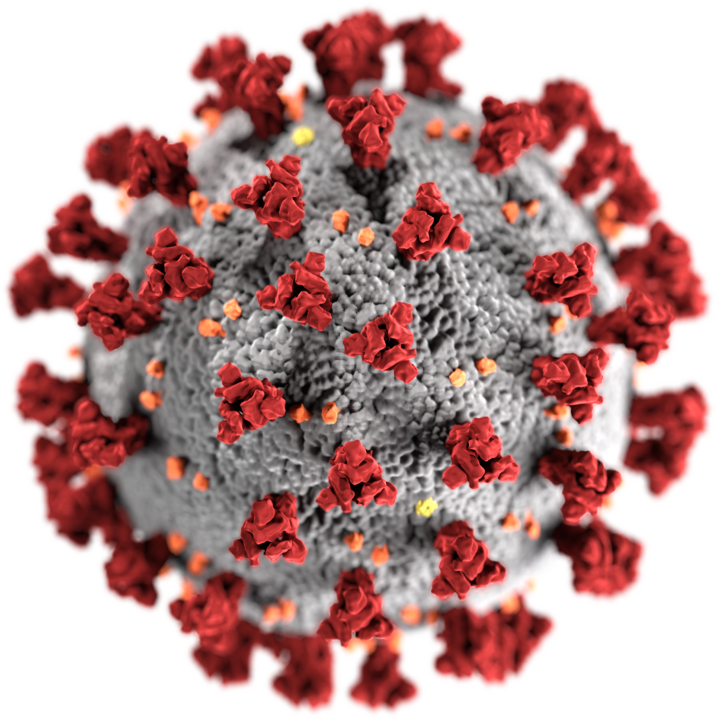Mutant Mouse Resource & Research Centers Develop New Mouse Models for COVID-19 Research

., . .
HIV and simian immunodeficiency virus (SIV) replication are concentrated within the B cell follicles of secondary lymphoid tissues. In this study, the researchers developed immunotherapeutic chimeric antigen receptor (CAR) T cells that home to follicles and clear SIV-infected cells in a rhesus macaque model. The CAR T cells localized to the follicle, replicated, and interacted directly with infected cells. Most of the treated animals maintained lower viral loads in the blood and follicles, compared to control animals.
., . .
Recent studies suggest that people with HIV—particularly those not receiving antiretroviral therapy or those with low CD4 cell counts—are at increased risk of severe illness from SARS‑CoV-2 coinfection. Angiotensin-converting enzyme 2 (ACE2), the cellular receptor for SARS-CoV-2, is likely to play an important role in modulating physiological and pathological events during HIV infection.
., . .
Efficacy of the vaccine mRNA-1273 against SARS-CoV-2 Delta decreases with time, yet there are limited data on how durability of immune responses affects protection. Researchers immunized male rhesus macaques with mRNA-1273 and challenged them with Delta one year later. Serum neutralizing antibody responses to Delta and protection in upper airway were low one year after mRNA-1273 vaccination.
., . .
Investigators determined that antibodies are the correlate of protection in vaccinated individuals enrolled in the Moderna coronavirus efficacy phase 3 clinical trial. Vaccine recipients were assessed for neutralizing and binding antibodies as correlates of risk for COVID-19 disease and as correlates of protection. All markers were inversely associated with COVID-19 risk and directly associated with vaccine efficacy. These results help define immune marker correlates of protection and may guide approval decisions for messenger RNA (mRNA) COVID-19 vaccines and other COVID-19 vaccines.

., . .
The effects of immunodeficiency caused by chronic HIV infection on COVID-19 have not been directly addressed in a controlled setting. Investigators conducted a pilot study in which two pigtail macaques (PTMs) chronically infected with SIVmac239 were exposed to SARS-CoV-2 and compared with SIV-naive PTMs infected with SARS-CoV-2. Despite the marked decrease in CD4+ T cells in the SIV-positive animals prior to exposure to SARS-CoV-2, investigators found that disease progression, viral persistence, and evolution of SARS-CoV-2 were comparable to the control group.
., . .
Investigators showed that the S glycoprotein of the clade 3 sarbecovirus PRD-0038 in the African Rhinolophus bat has a broad angiotensin-converting enzyme 2 (ACE2) usage and that receptor-binding domain (RBD) mutations further expand receptor promiscuity and enable human ACE2 utilization. They generated a cryogenic electron microscopy structure of the RBD bound to ACE2, explaining receptor tropism and highlighting differences between SARS-CoV-1 and SARS-CoV-2.
., . .
Developing noninvasive methods for in vivo quantification of T cell distribution and kinetics is important because most T cells reside in the tissue. Investigators presented the first use of dynamic positron emission tomography (PET) and kinetic modeling for in vivo measurement of CD8+ T cell distribution in healthy individuals and COVID-19 patients. Kinetic modeling results aligned with the expected T cell trafficking effects. Tissue-to-blood ratios were consistent with modeled net influx rates and flow cytometry analysis.
., . .
To address how interactions between SARS-CoV-2 factors and host proteins affect COVID-19 symptoms, including long COVID, and facilitate developing effective therapies against SARS-CoV-2 infections, researchers reported the generation of a comprehensive set of resources, mainly genetic stocks and a human cDNA library, for studying viral–host interactions in Drosophila.
., . .
Most patients with COVID-19 clear the virus upon resolution of acute infection, but a subset of immunocompromised individuals develop persistent SARS-CoV-2 infections. In this study, investigators describe sequential persistent SARS-CoV-2 infections in three individuals that led to the emergence, forward transmission, and continued evolution of the Omicron BA.1 variant Omicron BA.1.23. The study demonstrated that in the presence of suboptimal immune responses, persistent viral replication is an important driver of SARS-CoV-2 diversification.